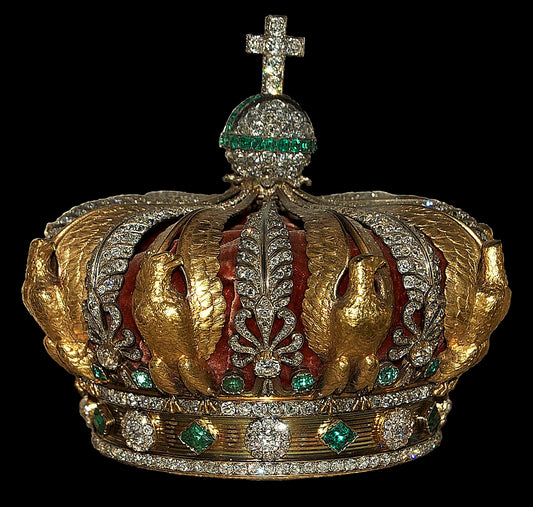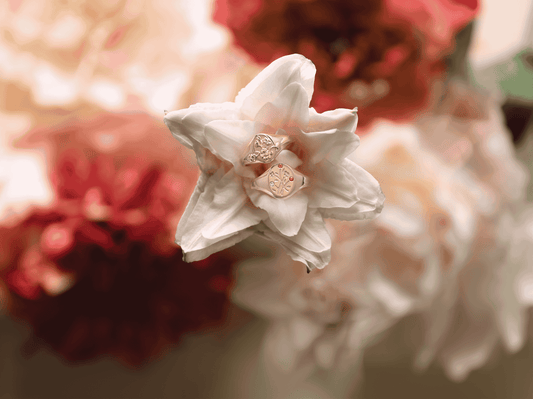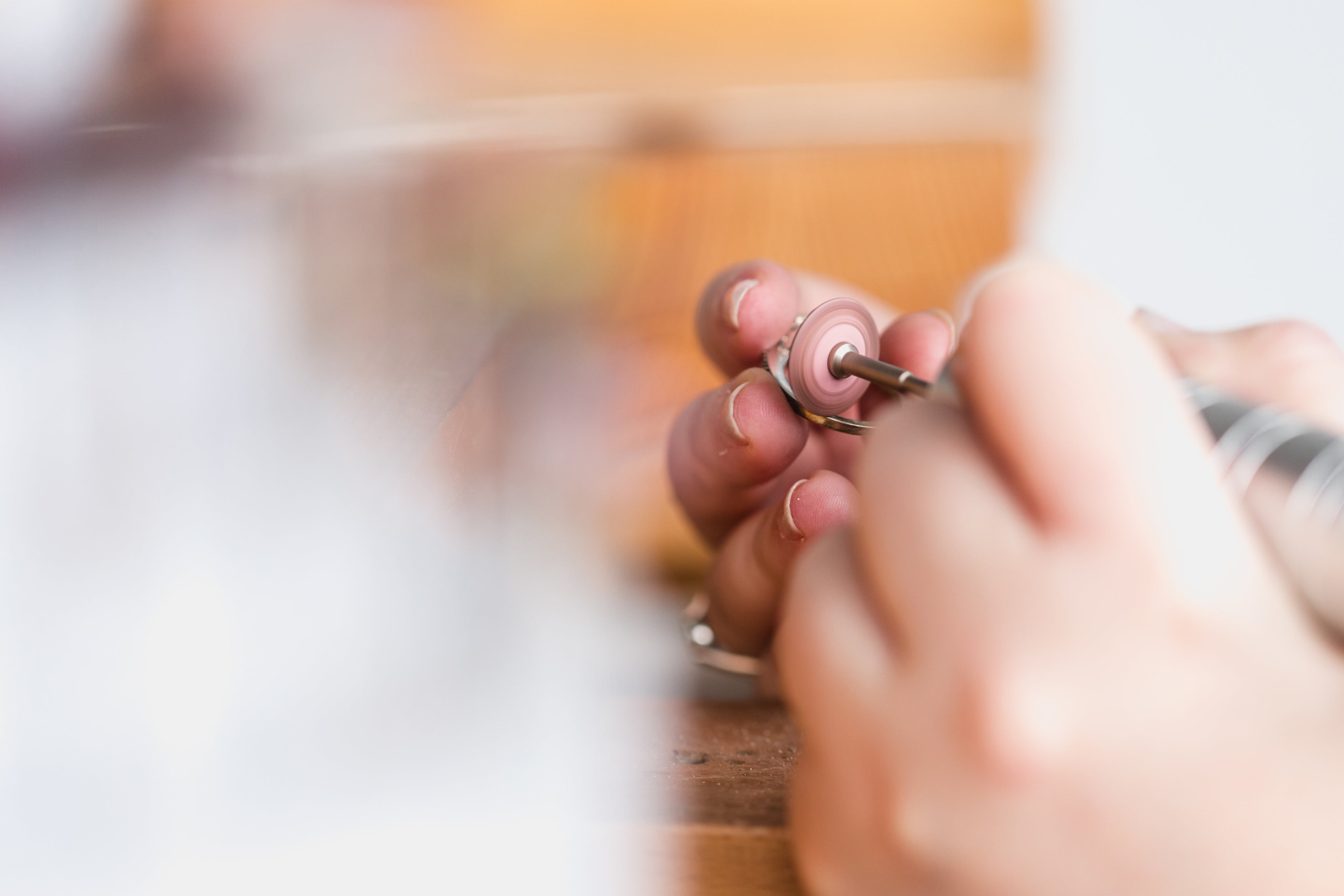Jewelry has never just been about ornamentation.
Across cultures and centuries, jewelry has served as a form of communication—subtle, beautiful, and deeply human. A pendant worn close to the heart might carry the weight of memory. A gemstone, chosen carefully, might spell out a secret message. A carved symbol might express faith, grief, hope, or resistance—sometimes all at once.
This post explores the symbols and motifs that have spoken quietly through time. Some are familiar. Others may surprise you. Together, they show how jewelry, at its best, tells a story without saying a word.
1. The Power of Engraving: Words, Dates, and Secret Messages
Inscribed Emotions
Engraving allows jewelry to carry meaning that’s felt but not always seen. From initials and dates to phrases exchanged between lovers, engraved messages have long turned objects into touchstones of memory.
In the Georgian and Victorian eras, mourning jewelry often featured names, dates, and phrases like “Not lost but gone before.” Romantic engravings—“Je t’aime,” or simply *“Forever”—*turned lockets and rings into private declarations.
The Secret Language of Lovers
One of the more poetic traditions is acrostic jewelry, where gemstones were selected so their first letters spelled out a message. A ruby, emerald, garnet, amethyst, ruby, and diamond? “REGARD.” These tokens were worn close to the body, the meaning known only to the wearer and their beloved.
Lover’s knots, clasped hands, and twin hearts were also common—each one a visual shorthand for lasting connection.
Modern Echoes
Today, we engrave fingerprints, GPS coordinates, voice waveforms, and even handwritten notes into metal. The materials and techniques may have changed, but the intention remains: to make memory tangible.
2. A Symbolic Vocabulary: Motifs Across Time
Symbols evolve, but many appear and reappear through the centuries with remarkably consistent meaning. Here are just a few of the most enduring:
Acanthus Leaves
Used in classical architecture and jewelry since Ancient Greece, the acanthus symbolizes endurance, rebirth, and eternal life. It saw a resurgence during the Victorian and Art Nouveau periods—often carved in high relief or etched into metal.
Hearts
More than just romance. Hearts have represented courage, charity, the soul, and—when crowned or clasped—loyalty (as in the Irish Claddagh ring). Their simplicity allows them to be deeply personal.
Snakes and Serpents
Symbols of rebirth, eternity, and wisdom. Queen Victoria’s engagement ring featured a coiled serpent, setting off a 19th-century trend. In some cultures, snakes also carry feminine energy, life force, and protection.

Hands
Fede rings, with two hands clasping, date back to Roman times. In the Victorian period, hands were often shown holding flowers, hearts, or wreaths—symbolizing offering, devotion, and mourning.
Floral Language
The Victorians elevated floral symbolism to an art form.
- Roses for love
- Lilies for purity
- Forget-me-nots for remembrance
- Ivy for fidelity
Each flower held a message, and many were worked into brooches, lockets, and rings to speak that message silently.
Celestial Symbols
Stars and crescents, often set with seed pearls or diamonds, spoke of divine guidance, feminine power, and protection. In times of uncertainty, people looked upward—and wore those symbols close.

Animal Imagery
Jewelry often borrows from the animal world:
- Doves for peace and spirit
- Bees for community, diligence, and resurrection
- Butterflies for transformation
- Owls for wisdom
- Lions for strength and sovereignty
These motifs cross cultures and time periods, appearing in everything from ancient talismans to contemporary fine jewelry.
3. Faith, Spirituality, and Protection
Religious jewelry bridges the visible and invisible, offering both expression and protection.
Crosses
A central Christian symbol representing sacrifice, love, and eternal life. The design has countless iterations: simple Latin crosses, ornate crucifixes, or regional variants like the Celtic cross.
Stars of David and Hamsas
In Jewish and Middle Eastern traditions, jewelry serves as both statement and shield. The Star of David represents identity and faith. The Hamsa, a hand often bearing an eye, wards off the “evil eye” and brings protection.
Om Symbols and Lotuses
In Hindu and Buddhist jewelry, the Om represents the essence of the universe. The lotus, blooming through mud, stands for spiritual awakening and the potential for beauty through struggle.
Evil Eyes
Found across the Mediterranean, the evil eye talisman is among the oldest forms of protective jewelry. It was believed to repel envy, misfortune, and harmful intent—sent through a glance.
Chakras and Energy Jewelry
While contemporary in presentation, these pieces draw on ancient systems. Stones are selected and arranged to align with energy centers of the body, offering balance and healing through color and symbolism.
4. Cultural and Historical Influences on Symbolism
Motifs often reflect the cultural climate of their time—whether as artistic exploration or political expression.
Egyptian Influence
The ankh, representing eternal life, is one of the oldest known symbols and remains deeply relevant. During the 1920s, “Egyptomania” took hold in Western design after the discovery of Tutankhamun’s tomb. Scarabs, lotuses, and the Eye of Horus flooded jewelry houses—though often with little context or credit.
It’s worth noting that many of these symbols, like the ankh and scarab, are part of a much longer lineage. Their resurgence in modern jewelry—especially in pieces by Black American designers—has often served as a reclamation of ancestral identity.
Black American Jewelry Traditions
Though historically underrepresented in mainstream jewelry history, Black Americans have long used jewelry for expression, survival, and pride.
-
Nameplate necklaces, popularized in the 1980s and ’90s, were not only aesthetic but deeply cultural—signaling identity, presence, and autonomy in a society that often tried to erase both.
-
Gold chains, bangles, and hoop earrings have carried status, protection, and resistance across generations. These aren’t just “fashion”—they’re deeply symbolic.
Modern Black jewelry artists are reclaiming and reinterpreting traditional African motifs (like Adinkra symbols) into pieces that bridge diaspora, memory, and meaning. Incorporating these symbols into contemporary jewelry design is not just decorative—it’s cultural storytelling.
Asian Influences
Post–World War II and during the Vietnam and Korean wars, American aesthetics began to absorb elements like cherry blossoms, dragons, pagodas, and calligraphy. These often symbolized renewal, wisdom, and resilience, though Western adoption has at times lacked full understanding of their origins.
Today, more Asian American designers are reinfusing these symbols with their proper reverence, offering design that bridges heritage with forward-looking form.
Art Nouveau and Art Deco
These design movements—respectively flowing and organic versus bold and geometric—introduced entirely new visual languages. But even their most abstract forms were often grounded in symbolic meaning: nature, progress, optimism after war.
5. The Revival of Meaningful Jewelry Today
We're living in a time of reconnection. More and more people are turning to jewelry not just as adornment, but as an extension of identity and intention.
Heirloom Revival
Clients seek out vintage pieces or reimagine inherited ones, preserving their emotional and symbolic weight. A mourning ring becomes a wedding band. A brooch is turned into a pendant. Symbols are carried forward—not just worn, but witnessed.
Subtle, Personal Symbolism
Birth flowers. Coordinates. Star signs. Animals that show up in dreams. Jewelry design has become increasingly introspective, allowing clients to choose symbols that may be legible only to them—and that’s part of the magic.
At Stradley & Daughter, we love weaving these quiet stories into metal and stone. It's a kind of secret handshake with yourself. Or with someone long gone.
6. Why Choose Stradley & Daughter for Symbolic Jewelry
We believe jewelry should say something—even if it only whispers to those who understand.
Whether you're carrying on a legacy or creating your own, we specialize in helping you tell your story with intention. That might mean redesigning a family piece to highlight a forgotten engraving. Or starting fresh with motifs that reflect your faith, your milestones, or your values.
Client Story: A Custom Pendant for a Marriage with Meaning
"For our tenth anniversary, I wanted something quiet but deeply meaningful. Stradley & Daughter helped us design a pendant with ivy leaves for fidelity, our initials engraved in the back, and a blue-green sapphire that's the same color as the lake where we took our first hike. It's not flashy. It's just us.” —Marissa, client
Jewelry That Speaks Without Words
Jewelry is history. It's memory. It's protest and prayer and hope and healing.
Whether it's a cross or an ankh, a bee or a star, a single engraved word or a hand holding a heart—these symbols speak. And what they say lasts long after the sparkle fades.
We’d be honored to help you create a piece that speaks for you.
Book a consultation and let’s design something meaningful—together.





